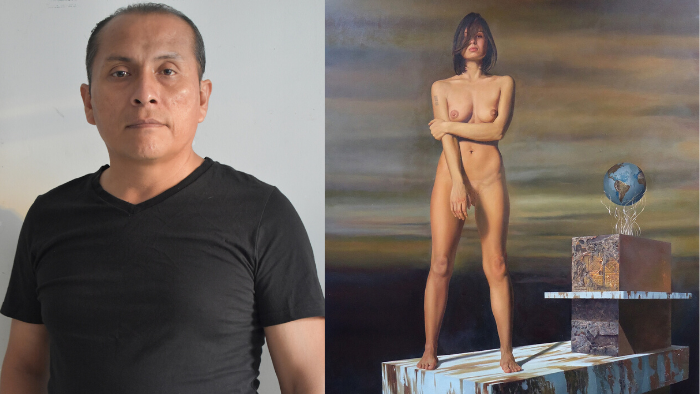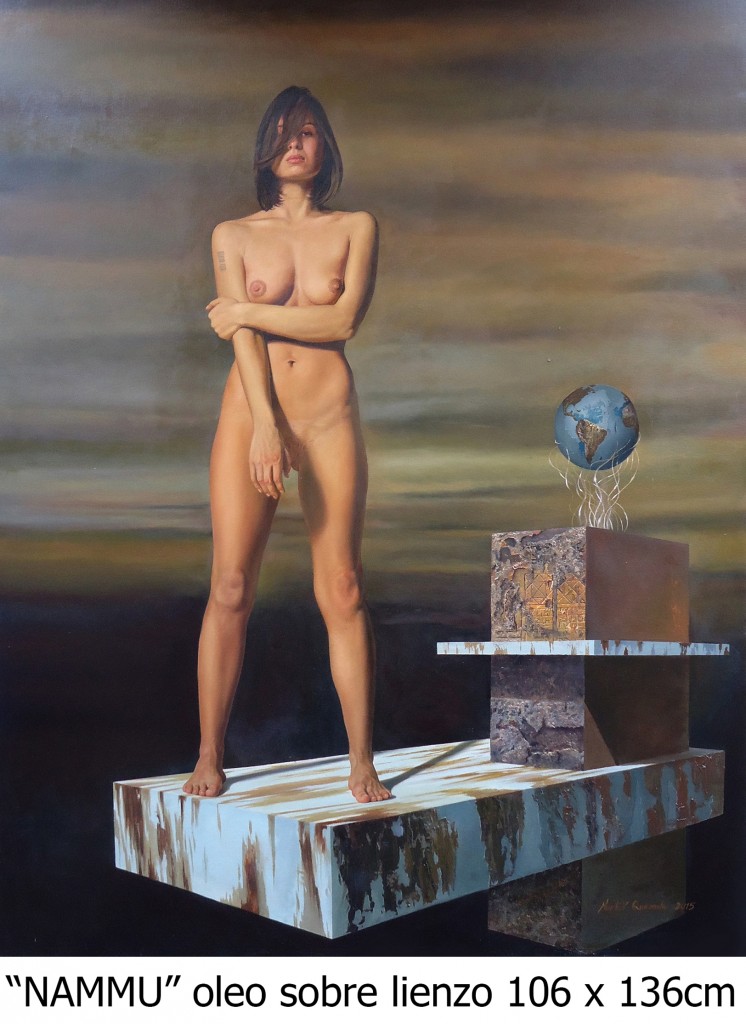“It always starts with an idea, sometimes it’s a story I want to tell, other times it’s just a painting or a pure fantasy”
Nigel Follett is a talented award-winning artist based in The United Kingdom. He started painting as a hobby, using watercolor and oils, until he discovered digital painting and felt passionate for free-hand fine-art techniques in 2013. A year later, his painting ‘Ragnar’s Epitaph’ was short-listed for top 100 in 2014 for the International Lumen Prize for Digital Art.
Follett enjoys painting portraits, nature, and people. However, as he stated on his Artfinder page, he prefers to address contemporary matters: “I often use art to paint concepts relating to the challenging environmental and social issues we face and I am both passionate and inspired by these subjects.” His beautiful paintings show powerful and surreal images that invite viewers to think and reflect on what they see.

In this Q&A, artist Nigel Follett shares with PoseSpace how he started creating art using digital media, how he discovered PoseSpace, what he’s been working on during the Covid-19 pandemic and more:
Can you tell us about your background and how you got into art?
My background is unremarkable and my journey into art started with an inspirational teacher at High School. He uncovered an ability that I hadn’t been aware of, but more importantly, he gave me the confidence to express it. That said, I didn’t pursue art other than as an occasional foray as a hobby until 2014, when the death of the son of a friend made me wonder how I could express my sorrow for her. I painted her son using an art programme and a mouse, because I had no traditional materials to hand. That was the beginning of an insatiable desire to create free-hand art using the new digital media that was available.
Are you painting anything related to the COVID-19 pandemic?
No, but I am painting more, the latest of which is called ‘Oblivious’ which I’m sharing with you here. Much of what I paint is a visual narrative of what I see going on in the world. I’ve decided not to directly address COVID-19, but I have painted about what may have caused it – our wanton disrespect for our environment and the people, plants and creatures we share it with. ‘Consumerism’ is one such painting.

Can you tell us about the process of making your work?
It always starts with an idea, sometimes it’s a story I want to tell, other times it’s just a painting or a pure fantasy. I visualise the complete painting and how I’m going to execute it. I paint using a water colour technique in the digital world, using brushes I’ve either created myself (hair and fur for example) or collected. I use a Wacom graphics tablet and the painting programme which is part of Adobe Photoshop, but I hasten to add that I never use photos within my work, it’s all free-hand and I often have to make time lapse videos to prove it.

What do you think of PoseSpace? Do you have a favorite model?
I had to do a lot of hunting around the internet to find Posespace, because I had a ‘story’ in my mind, and it required a beautiful young woman looking at her reflection but appearing to be ashamed of it. Finding such images which weren’t pornographic was a struggle until I came across your brilliant website, which had 360-degree photographic sessions and a bewildering choice. The resulting painting was my first ever nude, ‘Trisha in Reflection’, using the model of the same name. I’ve used that original painting of Trisha in numerous other works since then – often clothed I might add – she has a demure quality which works so well in many of my works. As far as a favourite is concerned, I can’t say that I have one or that look at your models in that way. They are all incredible and bring different things to my work. ‘Damara’ featuring Cath is one of my favourite paintings because her hair is amazing and presented a major challenge to paint. The pose she’s in lent itself to an epic scenario.

Which artist or painter has influenced you?
Waterhouse is a big influence and Dali, certainly.
Where do you get your imagery from?
My head, my surroundings, my interaction with others. On a more earthbound scale – My own photos, Posespace, Wikimedia Commons, Pixabay and others.
What’s been your greatest artistic success?
I’ve been lucky enough to have several, but the one I’m most proud of is a painting called ‘Ragnar’s Epitaph’, which was voted as one of the world’s top 100 digital paintings in the 2014 Lumen Prize, less than a year after I started painting in digital. It was displayed in the HQ of the Financial Conduct Authority in London’s Canary Wharf for three months. Last year, this painting became the cover for the book ‘Vikings and the Vikings’, published by US publisher McFarland.
What advice would you give to young artists just starting in digital painting?
Be prepared to fail as you learn and enjoy it when you get it right. Developing technique isn’t about tools, it’s about how you use them. Feel a personal connection with your subject and the expression of that will tell stories that connect with others. YouTube is a great source of technique training, but don’t try to paint like everyone else, because there are so many really competent artists that look identical because they follow technique slavishly. Enter competitions and accept the criticism, because it’ll help you grow, no matter how harsh it may be.

Tell us one thing you thought you knew, that it later turned out you were wrong about.
Where do I start? When I was young, I thought I knew everything, and that older people were has-beens. Now I am the very thing I was disrespectful of and I realise that I knew very little back then. I’m still being surprised and learning every day and I now know that until the light fades away for good, there is always something worth knowing more about.
Interview by Andrea Miliani
Nigel Follet’s website: http://cyberpix.co.uk
Artfinder: https://www.artfinder.com/nigel-follett#/
Facebook: https://www.facebook.com/cyberpixman
Twitter: https://twitter.com/CyberPixMan
PoseSpace’s artworks: https://www.posespace.com/artists/?ai=150








